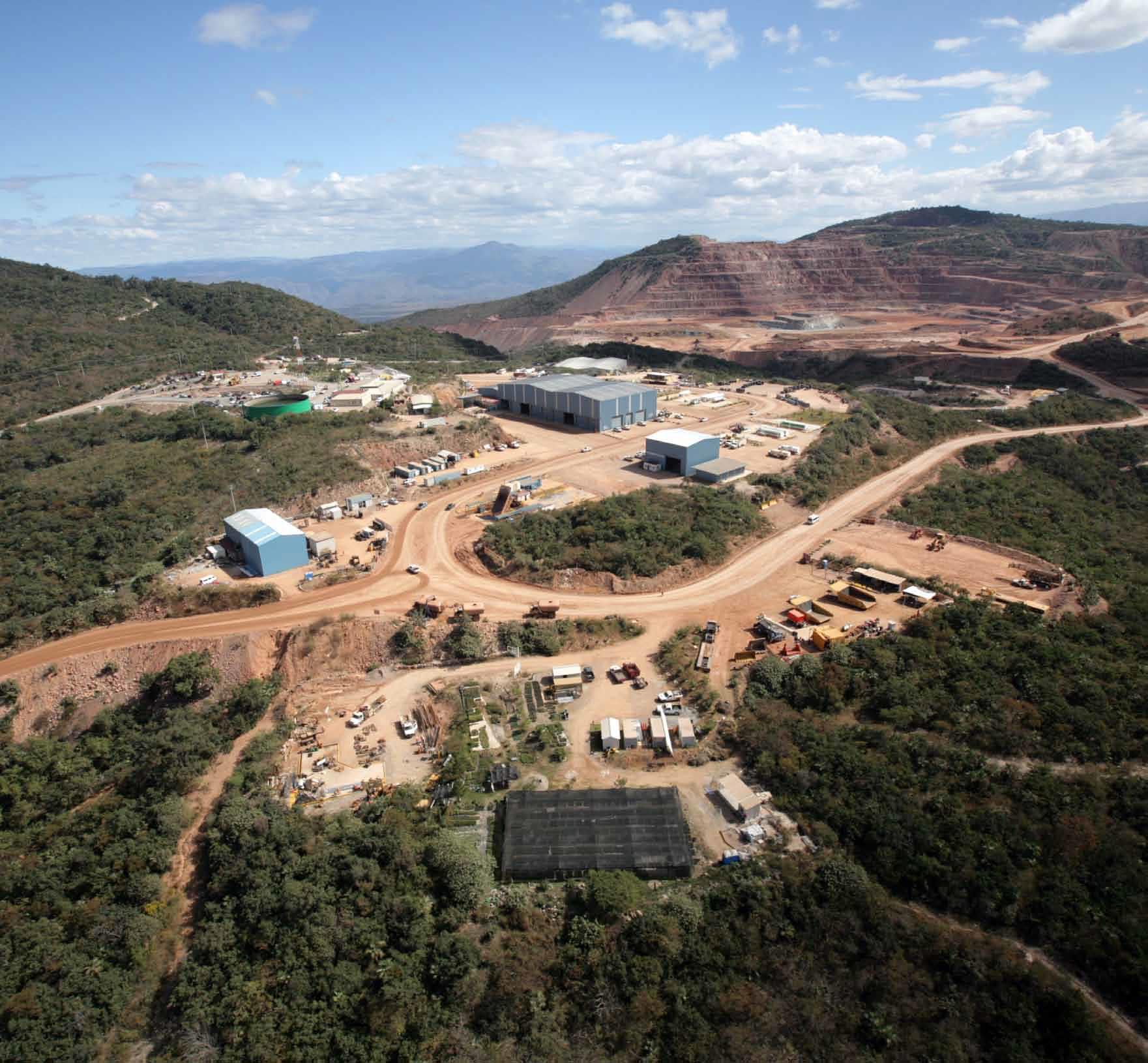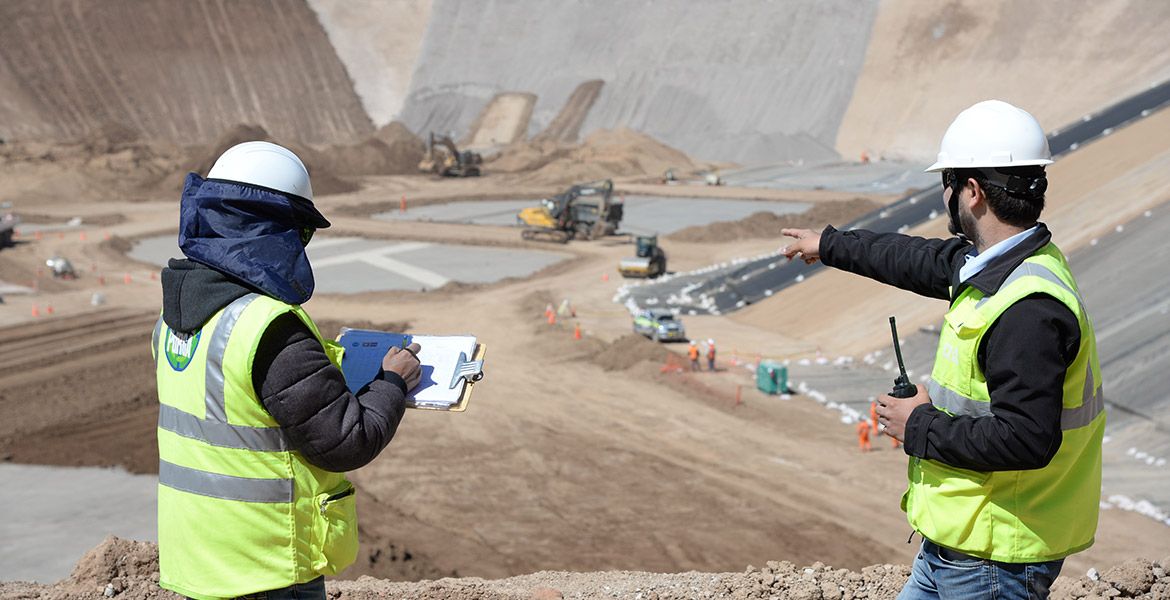
In a land where mining is centuries old, one of the country’s most productive 21st century practitioners is focusing on operating sustainably, responsibly—and profitably.
Inevitably, there are many superlatives to be heard in any discussion about the Goldcorp operations in Mexico. In a country with such a long tradition in mining as Mexico, Goldcorp is the most important producer of gold, zinc and lead there has ever been. Even with silver, Goldcorp is a close second to the country’s largest producer.
The Canadian mining company came to Mexico in 2005 through its merger with Silver Wheaton which had been running the then most productive gold mine in the country. “El Sauzal,” explains Business Support and Public Relations director Federico Villaseñor, “was for a long time the most important gold mine not only for us but the whole of Mexico. It’s gradually getting to the end of its productive life and output this year is expected to be down again by 20 percent to just 80,000 ounces. The mine will continue for another two to three years and it may even be possible to squeeze a little more from it—which will be good news for the 600 workers at the mine—but then it will have to be returned to nature as it was before we took over.”
El Sauzal was important to Goldcorp and the mining industry as a whole for another reason. It was the first Latin American mine to receive certification for its cyanide management procedures—something that chimes loudly with Goldcorp’s oft stated promise to operate sustainably and responsibly.
However, as El Sauzal was going into decline in the fabled mountain range of Sierra Madre, in the equally evocative state of Chihuahua, another Goldcorp mine was ready to take up the flagship role, across the other side of the country.
“Los Filos,” says Villaseñor, “is a big operation. The location is quite isolated but not nearly so much as Sauzal. Most of the 2,000-plus workforce have accommodation in nearby towns. The mine came on stream in 2007 and this year is expected to produce 345,000 ounces of gold.”
Yet Los Filos’s number one ranking will be short lived. Goldcorp’s third Mexican mine at Peñasquito, in a flat valley high in the Central Plateau, is gradually ramping up to full production. Ore extraction began in 2010 and last year the mine produced 254,000 ounces, but it has been necessary to strip many meters of overburden waste to get at the rich ore bodies. This year, the flagship honor will pass to Peñasquito when production hits an expected 425,000 ounces of gold. As well as being the country’s largest gold producer, it will also assume the role of most important source of lead and zinc with the additional benefit of significant quantities of silver.
Goldcorp is now one of the most well established senior gold producing companies in the world, with a dozen active mines on the Americas. Last year it had revenues of $5.4 billion and is predicting that within five years, gold production will reach 4.2 million ounces—an increase of 70 percent!
Who is to doubt them? Goldcorp claims that between 2001 and 2011, an investment in its shares would have outperformed any of its peer companies in the gold mining industry, as well as physical gold.
If this is to be achieved, Mexico will undoubtedly play a large role. The company is investing hundreds of millions of dollars in the search for new gold bearing deposits. Already known, and contiguous to Peñasquito on the northern border of the concession block, is the Noche Buena gold/silver project. Measured and indicated resources are nearly 1.0 million gold ounces and over 30 million silver ounces. Exploration here is continuing apace with the objective of extending the high-grade gold resources with the expectation that Noche Buena could come into production as early as 2015.
Just 50 kilometers from Peñasquito is the Camino Rojo gold/silver project, a 3,000 square kilometer acquisition that nearly quadruples Goldcorp’s land holding in the area. The Represa deposit alone, in this massive exploration zone, contains measured and indicated resources of 2.8 million gold ounces and 52.6 million silver ounces. A feasibility study is in the final stages of preparation and expected soon.
All of which is good news for Mexico in general and the inhabitants of these three out-of-the-way regions in particular. “Mining is important to the economy,” says Villaseñor, “but it is still behind sectors such as oil, manufacturing and tourism in terms of GDP. As it happens, none of the areas where our mines are located have any of these resources to provide work for local inhabitants, which makes our mines all the more important at ground level.”
In Canada, Goldcorp has several times been awarded the distinction of being amongst the best employers in the country, an accolade based on the company’s ‘6 pillars’ foundation. “There is a tangible adherence to the company’s guiding principles,” says Villaseñor. “The first three of our pillars are all about people. We want them to achieve their potential and to remain safe in their work; and we are anxious that the wider community benefits from our presence.”
The safety record at Los Filos in particular has been exemplary. In both 2010 and 2011, the mine was given the highest recognition possible from the Mexican Mining Chamber. “We instill in all our staff,” says Villaseñor, “that safety is in their hands. Each must care for the other and managers know that there must never be any suggestion of putting production before safety.”
Mexico is a highly unionized country with 63 percent of employees represented by a union. Against this background, 53 percent of Goldcorp’s hourly paid workers are in a union and in total, two thirds of all employees are members of some form of employee association able to bargain collectively on their behalf. Nevertheless, Goldcorp is equally accepting of those who choose not to be represented.
While the mining operations at all three mines are conventional in nature, both El Sauzal and Peñasquito experience problems because of their isolation. The only easy way to get to El Sauzal is by air and although Peñasquito is accessible by road, it’s a three hour drive to the nearest city. “This is where we can help the region where we work,” says Villaseñor. “A key part of developing a mine is to win approval from the local community. But it’s not a case of buying their approval. We want to target our contributions in ways which have a lasting contribution to their quality of life.”
Mines invariably need upgraded if not completely new roads. Similarly, there is a need for power and water. All of these can be made available to local communities, almost as a matter of course. At Los Filos, a better bus service was created not only for the mine but for residents’ wider social life.
Other investments Goldcorp makes are in better health facilities and schools of various levels. “We want to create not only the opportunity,” says Villaseñor, “but also the desire and the skills for local people to work for us. These days, with such a high degree of mechanization, there are few barriers to women working on the mine and those that do receive exactly the same benefits as the men. We don’t just want to create laboring jobs, though. To serve Peñasquito, we have helped create a technical college where the mechanical and electrical technicians of the future are being trained.”
Written by Alan Swaby; research by Daniel Finn and Vincent Kielty
DOWNLOAD
 GoldcorpMexico-AM-Sept12-Bro-s.pdf
GoldcorpMexico-AM-Sept12-Bro-s.pdf













